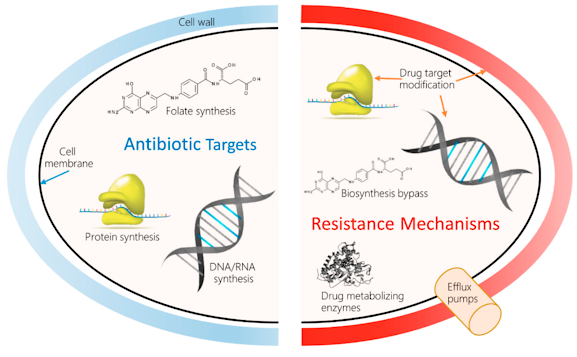Worldwide exploration joint effort prompts forward leap in anti-toxin obstruction testing utilizing DNA sequencing
Foundation
The World Wellbeing Association (WHO) has declared that antimicrobial obstruction (AMR) is one of human's driving worldwide public dangers. The shortfall of viable anti-microbials would neglect to forestall disease and would expand the gamble of significant medical procedure or malignant growth chemotherapy.
Among all anti-microbial safe strains, Enterococcus faecium, especially vancomycin-safe E faecium, presents a huge worry as it represents in excess of 200,000 passings each year worldwide.
This microbial strain has been distinguished to be the main source of emergency clinic procured contamination in the careful site, circulatory system, or urinary parcel. E faecium disease especially increments mortality gambles in immunocompromised and fundamentally sick patients. A few investigations have shown that E faecium opposes numerous normal anti-toxins like ampicillin and vancomycin.
Plate dispersion or stock microdilution techniques are regularly utilized for anti-microbial defenselessness testing (AST).
This test is pivotal to decide the right anti-microbials to treat a bacterial disease. Since anti-toxin opposition is hereditarily encoded, the entire genome sequencing technique has been utilized as an elective system to recognize AMR.
The exactness of this test relies upon the accessibility of refreshed information bases of hereditary determinants of AMR. Bioinformatic apparatuses are utilized to decipher hereditary information.
An entire genome sequencing system has been recently utilized for AMR of Mycobacterium tuberculosis, Streptococcus pneumoniae, and Staphylococcus aureus.
session the review
The primary goal of the ongoing review is to assess the precision of AMR assurance from E faecium genomes.
A sum of 4,382 E faecium confines were gathered with entire genome groupings and were related with accessible AMR aggregates. This technique recognized the concordance among genotypic and phenotypic AMR in E faecium.
E faecium utilized in this study was gotten somewhere in the range of 2000 and 2018 from eleven nations, including Australia, New Zealand, Germany, the Netherlands, the UK, Austria, Denmark, the USA, and Pakistan.
Bacterial genomes were broke down to identify the presence of qualities and changes that foresee AMR in E faecium. The exactness of genotypic forecasts was estimated involving phenotypic obstruction as the reference standard.
The ARIBA (Antimicrobial Obstruction Recognizable proof By Gathering) programming was utilized to decide anti-microbial opposition qualities and transformations from entire genome successions
Concentrate on discoveries
To foster a data set of hereditary determinants of anti-microbial obstruction in E faecium, a sum of 316 hereditary determinants were organized that contained 103 single changes, 100 transformations in mix, 82 single obtained qualities, and 27 different procured qualities against 17 anti-infection agents.
A solitary hereditary change or determinant can modify the powerlessness of a microorganism to different anti-toxins.
The data set created in his review contained hereditary determinants that make obstruction 12 distinct anti-microbials in E faecium.
Quite, this information base could precisely foresee anti-toxin opposition against ampicillin, quinupristin-dalfopristin, ciprofloxacin, vancomycin, linezolid, and teicoplanin.
Nonetheless, genotypic expectations for antibiotic medications and aminoglycosides need further improvement. Besides, there is a need to further develop responsiveness for tigecycline and daptomycin.
Past investigations have shown that changes in penicillin-restricting protein 5 (Pbp5) fundamentally add to ampicillin obstruction in E faecium.
Protection from glycopeptides not entirely settled with high responsiveness and explicitness in light of the presence of various useful variations of the van An and van B operons. Operon variations that lose explicit qualities are found in phenotypically safe disengages.
More exploration should be led in the future to investigate the commitment of uncommon van operons, like van C, van D, van E, van G, van L, van M, and van N, for glycopeptide opposition in E faecium.
Contrasted with recently created AMR data sets, the presently evolved one showed more precise genotypic expectations for some anti-infection agents.
The ongoing review saw that recognizing non-practical van operon variations, non-presenting obstruction transformations, shortened variations of qualities, and inaccurately encoded quality opposition connections gives low explicitness for deciding anti-toxin opposition.
Accordingly, for the expectation of anti-infection opposition, both the presence and respectability of the hereditary determinant are significant.
In accordance with accessible data set expectations, the presently organized data set showed low particularity in anticipating protection from antibiotic medication, while a significant level opposition was noticed for aminoglycosides.
Phenotypic re-testing demonstrated the presence of quieted AMR-related qualities. This peculiarity in E faecium should be investigated from here on out.
Additionally, future examinations should completely describe the hereditary premise of protection from these anti-infection agents.
Ends
The ongoing review uncovered that the recently arranged data set displayed same or higher precision in foreseeing AMR in light of the E faecium genome than the current data sets.
These genotypic expectations have been executed on Pathogenwatch, which is an electronic instrument that decides AMR from the genomes of numerous microorganisms.
The expansion in prominence of the entire genome sequencing technique in clinical and general wellbeing microbial science labs will support adjusting this system for diagnosing and surveilling AMR in E faecium.
Tags
Health

